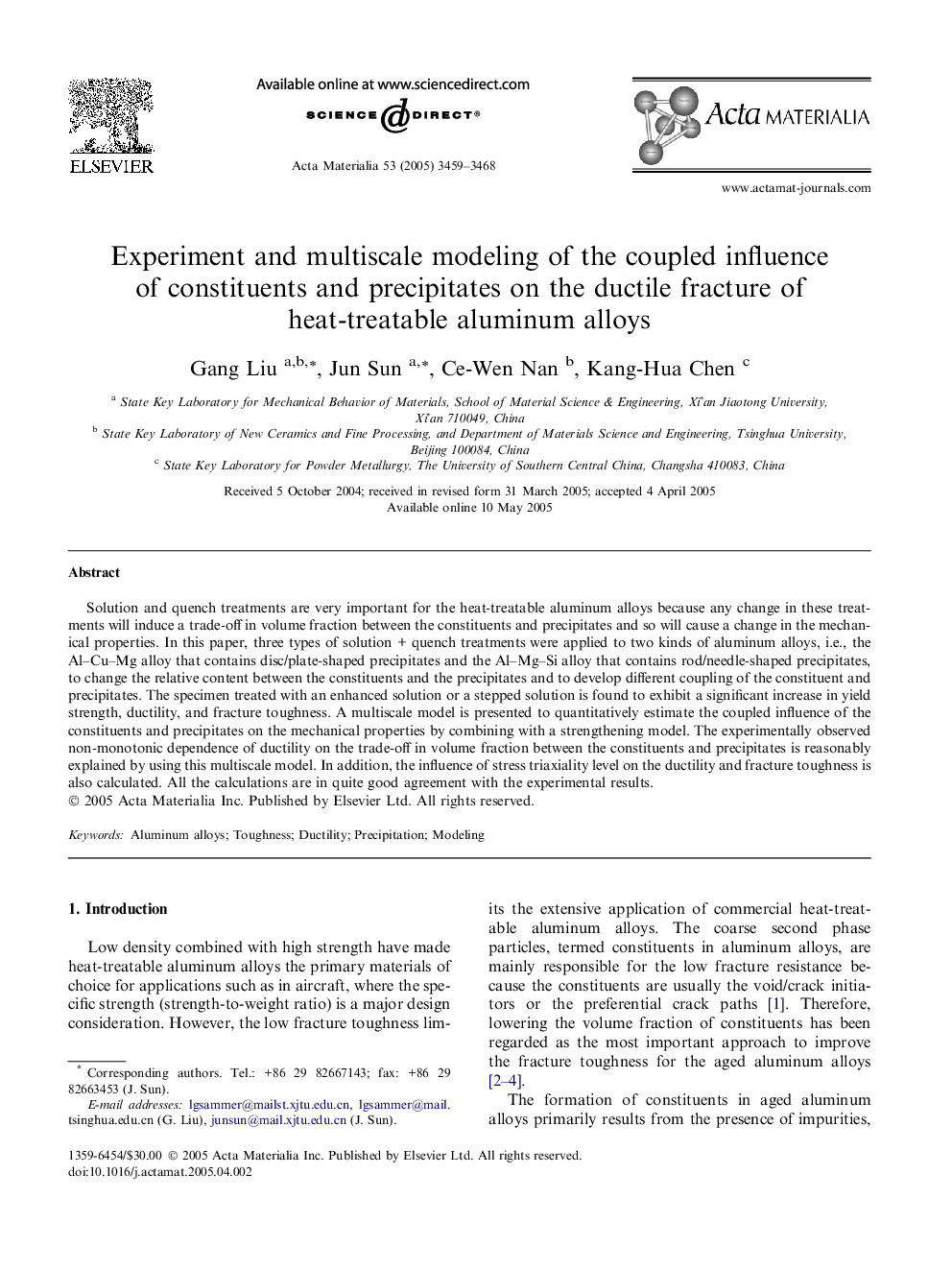| کد مقاله | کد نشریه | سال انتشار | مقاله انگلیسی | نسخه تمام متن |
|---|---|---|---|---|
| 1451512 | 988779 | 2005 | 10 صفحه PDF | دانلود رایگان |

Solution and quench treatments are very important for the heat-treatable aluminum alloys because any change in these treatments will induce a trade-off in volume fraction between the constituents and precipitates and so will cause a change in the mechanical properties. In this paper, three types of solution + quench treatments were applied to two kinds of aluminum alloys, i.e., the Al–Cu–Mg alloy that contains disc/plate-shaped precipitates and the Al–Mg–Si alloy that contains rod/needle-shaped precipitates, to change the relative content between the constituents and the precipitates and to develop different coupling of the constituent and precipitates. The specimen treated with an enhanced solution or a stepped solution is found to exhibit a significant increase in yield strength, ductility, and fracture toughness. A multiscale model is presented to quantitatively estimate the coupled influence of the constituents and precipitates on the mechanical properties by combining with a strengthening model. The experimentally observed non-monotonic dependence of ductility on the trade-off in volume fraction between the constituents and precipitates is reasonably explained by using this multiscale model. In addition, the influence of stress triaxiality level on the ductility and fracture toughness is also calculated. All the calculations are in quite good agreement with the experimental results.
Journal: Acta Materialia - Volume 53, Issue 12, July 2005, Pages 3459–3468